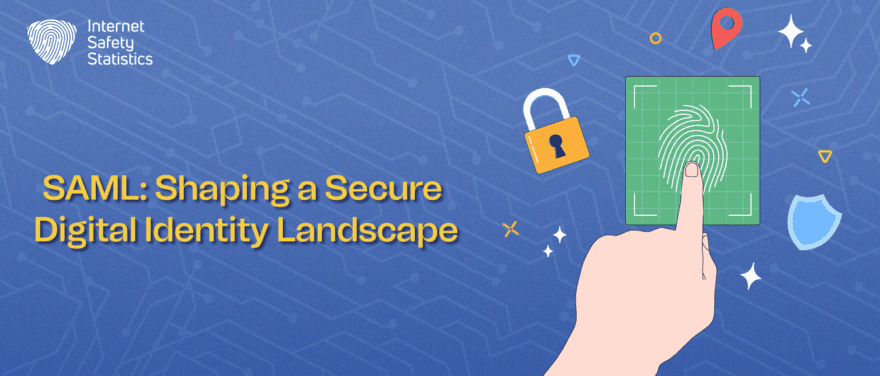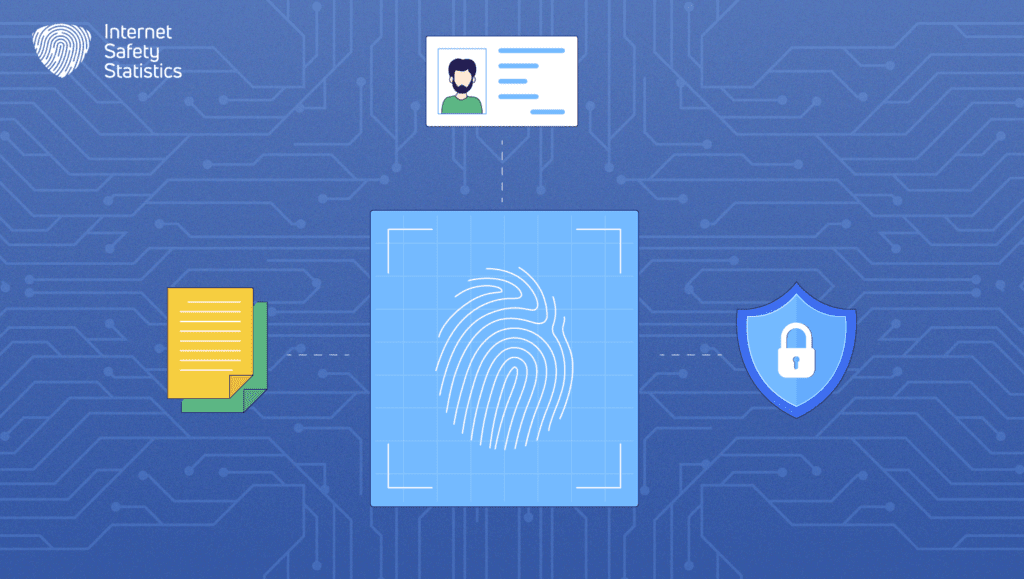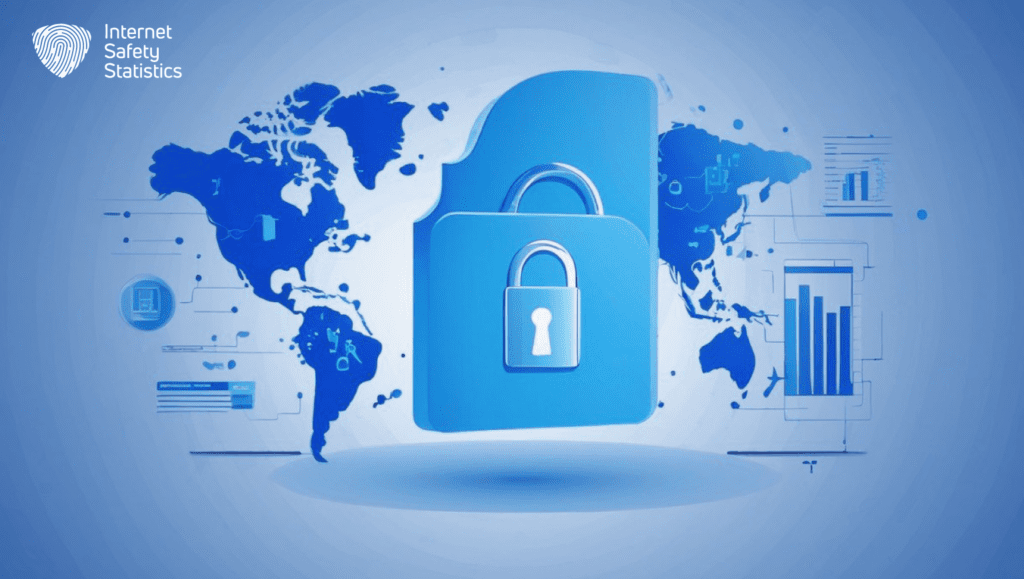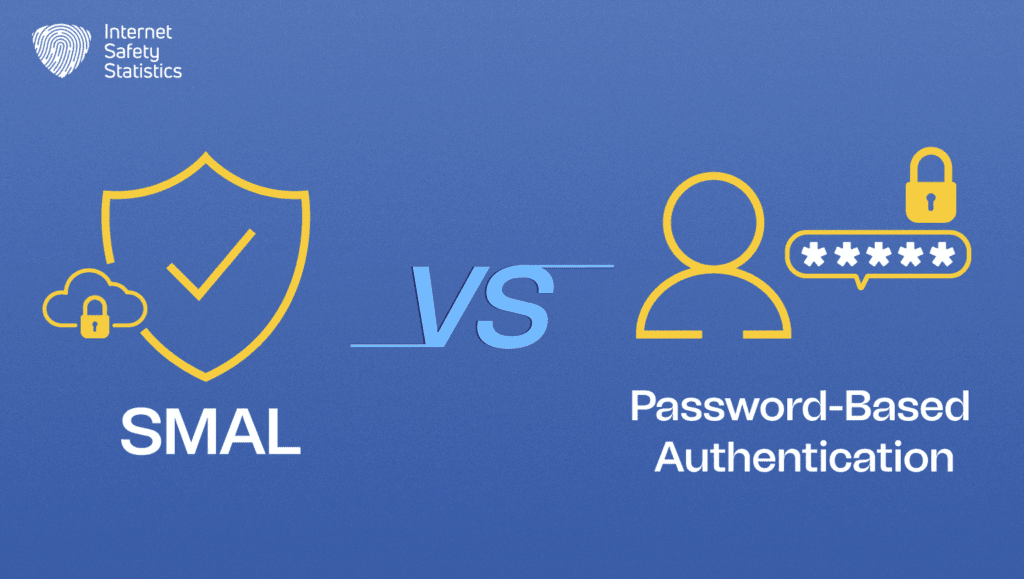
In the intricate web of the digital age, where identities and information traverse vast online territories, security remains a paramount concern. SAML, or Security Assertion Markup Language, emerges as a sentinel, standing at the crossroads of secure identity management and access control. In a world where protecting sensitive data and ensuring smooth, user-friendly experiences are non-negotiable, SAML has become a linchpin in the realm of authentication and authorisation.
From enterprise Single Sign-On (SSO) to e-commerce applications and government services, SAML plays a pivotal role in securing access to a multitude of online platforms. This article embarks on a journey to unravel the nuances of Security Assertion Markup Language, starting with the basics of what it is and how it works. We’ll then delve into its applications, benefits, and how it stands against other authentication protocols, providing a comparative analysis that sheds light on its strengths and weaknesses.
As we explore the inner workings of SAML, we’ll also scrutinise its security considerations, understanding the threats it faces and the best practices for fortifying its deployment. Beyond the present, we’ll venture into its future, exploring its relevance in a constantly evolving digital landscape. SAML is more than just an acronym; it’s a key that unlocks the doors to secure, seamless, and standardised identity management. Join us on this journey to demystify SAML and understand its vital role in shaping a safer digital world.
What is SAML?
SAML stands for Security Assertion Markup Language. It is a security standard that facilitates the exchange of authentication and authorisation data between an identity provider (IdP) and a service provider (SP). It plays a crucial role in establishing a secure digital identity landscape by enabling seamless authentication and authorisation across various applications and services. By eliminating the need for users to repeatedly enter their credentials on different platforms, it enhances user experience and simplifies the authentication process.
SAML Components
SAML involves three main components: Service Provider, Identity Provider, and User.
• Service Provider (SP): The SP is the system or application that the user is trying to access. It relies on the Identity Provider for authentication and authorisation. This could be a web application, a cloud service, or any online resource requiring access control.
• Identity Provider (IdP): The IdP is responsible for authenticating the user and providing assertions or claims about the user’s identity to the SP. It holds user identities and validates their credentials. It could be an in-house authentication system, a third-party Single Sign-On (SSO) service, or a custom-built solution.
• User: The user is the individual seeking access to the service or application provided by the SP. Their identity is stored and managed by the IdP.
SAML Flow
Let’s explore how SAML works in detail:
1. User Accesses the Service: The process begins when a user attempts to access a service or application (SP). They may click on a link or enter a URL in their web browser.
2. SP Requests Authentication: The SP recognises that the user needs to be authenticated and redirects them to the IdP’s login page.
3. User Authentication: The user enters their credentials (username and password) on the IdP’s login page.
4. IdP Authenticates the User: The IdP verifies the user’s credentials. If they are correct, the IdP generates a SAML assertion. This assertion contains information about the user’s identity and, optionally, attributes or claims (e.g., role, group membership).
5. SAML Assertion is Created: The SAML assertion is created based on the user’s successful authentication. It includes statements about the user’s identity and is digitally signed by the IdP to ensure its integrity.
6. SAML Assertion is Sent to the SP: The IdP sends the SAML assertion back to the SP. This is typically done through the user’s web browser using an HTTP POST request. The assertion is embedded within this request.
7. SP Validates the Assertion: The SP receives the SAML assertion and validates it. It checks the digital signature to ensure that the assertion is from a trusted IdP and that it hasn’t been tampered with.
8. User Access is Granted: If the SAML assertion is valid, the SP grants the user access to the requested service or application. The user is logged in without the need to enter credentials again (Single Sign-On or SSO).
9. User Access Revocation: Access is often time-limited. The SP might implement a session timeout, and the user would need to re-authenticate if their session expires.
SAML in Action
Imagine an employee logging into a cloud-based file storage system (SP) using their work email and password. The SP, in this case, requests authentication from the IdP (the company’s internal authentication system). Once the user successfully logs in, the IdP creates a SAML assertion stating that the user is authenticated. This assertion is sent back to the SP, allowing the employee to access the files without needing to log in separately to each cloud service. This is an example of the convenience and security that SAML enables through SSO.
Benefits of SAML

SAML isn’t just a complex protocol; it’s a guardian of your digital identity, an enabler of convenience, and a keeper of your data integrity. It creates a secure, interconnected digital world where you can confidently access various services and resources with ease, knowing your identity is well-protected and your experience is seamless.
1. Enhanced Security
Security Assertion Markup Language significantly improves security in the digital realm. It provides a robust method for verifying and managing user identities. When a user logs in, the identity provider (IdP) authenticates them. The SAML assertion, which contains information about the user’s identity, is digitally signed by the IdP. This digital signature acts like a virtual seal, ensuring that the identity information hasn’t been tampered with during transmission. It means that when you access your online banking, email, or any other service, you can be confident that the system knows who you are and your data is well-guarded.
2. Single Sign-On (SSO) Convenience
Security Assertion Markup Language makes life easier for users. Instead of needing a unique username and password for every application or service, you can use one set of credentials to access multiple resources. For instance, think about the times you’ve logged into your company’s email and then seamlessly moved on to your project management tool or cloud storage without re-entering your credentials. SAML’s SSO feature streamlines your digital life, saving time and reducing the mental burden of managing numerous login credentials.
3. Interoperability Across Platforms
SAML is like a universal language for authentication. It works across different platforms and technologies. This means that your organisation can integrate SAML into its existing systems, whether they are on-premises or in the cloud. You can link your in-house customer portal, your cloud-based document management system, and third-party apps using SAML. The ability to connect a diverse range of services enhances the digital experience, both for you and the organisations providing these services.
4. Scalability for Organisations
In the corporate world, SAML offers scalability. It can handle a growing number of users and applications seamlessly. This is particularly important for large enterprises or organisations experiencing rapid expansion. It is designed to accommodate thousands of users and a multitude of services, maintaining a smooth, secure flow of access.
5. Compliance and Regulations
Many industries and organisations must comply with strict data protection and privacy regulations. SAML helps you meet these requirements. By ensuring that identity and access management adhere to industry standards, it can assist in maintaining compliance. This is vital for sectors like healthcare and finance, where sensitive information is at stake.
6. Reduced Password Fatigue
If you, like most people, have to deal with the frustration of managing a slew of usernames and passwords, this burden is now lightened. With SAML’s SSO, you only need to remember one set of credentials. This makes your online life simpler while reducing the risk of weak passwords or password-related security issues.
Use Cases and Applications of SAML

Here are some examples that demonstrate the versatility and widespread adoption of SAML in various aspects of the digital landscape. Its ability to facilitate secure authentication, authorisation, and data exchange makes it an essential tool for organisations seeking to enhance security, simplify user access, and streamline identity management.
1. Enterprise Single Sign-On (SSO)
SAML shines as the hero of convenience for employees in modern organisations. Picture this: You’re at work, and you need to access your company email, shared documents, customer relationship management (CRM) system, and other services. With SAML’s SSO capability, you log in once, and you’re granted access to all these resources without the hassle of entering your credentials repeatedly. It streamlines the workday and boosts productivity.
2. Cloud-Based Services
SAML is a trusty companion in the cloud era. As more organisations migrate to cloud-based solutions, SAML ensures secure access. Whether you’re using cloud storage, collaboration tools, or software-as-a-service (SaaS) applications, it acts as the bouncer at the digital door, verifying your identity and granting you access. This is especially crucial for organisations where employees need to access various cloud apps daily.
3. Government and Healthcare
In sectors where data privacy is paramount, like government and healthcare, SAML is the unsung hero. It provides a secure way for professionals to access sensitive information and services. Government agencies use it for citizen portals, and healthcare providers rely on SAML to protect patient data in electronic health records. When you’re accessing your tax information or managing your medical records online, rest assured that SAML is working behind the scenes to keep your data safe.
4. Education and Academia
For students and educators, SAML simplifies access to a plethora of online resources. Learning management systems, library databases, and student portals are often linked using SAML. Students can seamlessly move between various platforms with a single login. This streamlines the learning experience, reducing the time spent on accessing educational materials.
5. E-commerce and Customer Portals
When you’re shopping online or managing your accounts on a company’s website, SAML ensures that your transactions and personal information remain secure. It allows you to enjoy a smooth shopping experience without worrying about the safety of your payment details. It is the reason you can trust the padlock icon next to the website URL.
In essence, Security Assertion Markup Language is like a backstage pass to a range of digital experiences. It enables seamless, secure access to a diverse array of online services, whether you’re at work or school or whether you’re shopping or interacting with sensitive data in sectors like healthcare and government. It’s the reason you can navigate the digital world with confidence, knowing your information is safeguarded, and your access is hassle-free.
SAML vs. Other Authentication Protocols
Now, let’s delve deeper into the distinctions between SAML and other authentication protocols. The choice depends on your specific needs. SAML offers a comprehensive solution, balancing both authentication and authorisation, making it suitable for large-scale applications and complex access control requirements. Other protocols, like OAuth and OpenID Connect, may serve as specialised tools for scenarios where limited access or user authentication is the primary concern.
SAML vs. OAuth
SAML is akin to an exclusive club with rigorous entry requirements. It focuses on both authentication and authorisation, ensuring that you are not only who you claim to be but also have permission to access a particular resource. This makes it an excellent choice for scenarios where a comprehensive security framework is required, such as in large enterprises or environments where SSO is essential. It excels at managing identity and access control across various services, making it an attractive option for complex use cases.
OAuth, in contrast, is like a valet key for your car. It’s designed for scenarios where you need to grant limited access to your resources without revealing your primary credentials. It is widely used in situations where you want to allow third-party applications to access your data on a specific service, like allowing a mobile app to post photos on your social media profile. While it excels at delegated authorisation, it doesn’t delve into the depths of authentication as SAML does.
SAML vs. OpenID Connect
SAML can be compared to a comprehensive membership card for a secure club. It not only authenticates users but also grants them access to various sections within the club. SAML is a heavyweight protocol that covers both authentication and authorisation, making it a top choice for enterprises and organisations seeking a comprehensive SSO solution. It can securely manage identity and access control, which is vital in scenarios demanding robust security.
OpenID Connect is more like a virtual identification card, focused primarily on user authentication. It ensures that users are who they claim to be but doesn’t delve deeply into authorisation processes. It’s like showing your driver’s license to enter a building; it confirms your identity. This makes OpenID Connect a popular choice for user authentication in scenarios like logging in using your Google or Facebook account. However, it may not provide the extensive access control features of SAML.
SAML vs. Password-Based Authentication

SAML resembles a high-security vault with multiple layers of authentication. It’s like the need for an access card, a personal identification number (PIN), and a fingerprint scan to gain access. It sets the gold standard for security and SSO, mitigating the need to manage numerous usernames and passwords. This makes it an appealing choice in environments where both security and ease of access are paramount.
On the other hand, traditional password-based authentication is like locking your front door with a simple key. It’s a widely used method, but it has its drawbacks. Passwords can be weak, shared, or stolen, posing significant security risks. They necessitate the arduous task of remembering multiple login credentials, making password management a potential headache.
The Future of SAML
The digital landscape evolves, and so does SAML. As organisations continue to adopt cloud-based applications and services, SAML’s role is expected to expand further. It is adapting to new trends in identity and access management, which are driven by the ever-increasing need for robust security. Its future lies in keeping pace with these trends and staying relevant in an environment where cyber threats continuously evolve. Let’s explore its emerging trends in identity and access management and its continued relevance.
Emerging Trends in Identity and Access Management
• The Growth of Federated Identity: SAML is at the forefront of federated identity management. In the coming years, we can expect it to play an even more significant role in facilitating secure interactions between organisations and their partners, clients, or third-party services. This means smoother and more secure collaborations across digital boundaries.
• Enhanced Security Protocols: SAML is likely to incorporate even stronger security measures to counteract evolving cyber threats. It will continue to evolve to address new vulnerabilities and maintain its status as a trusted protocol for ensuring user and data security.
• User-Centric Identity Management: The future of SAML also embraces a user-centric approach. Users are increasingly concerned about their digital identities and privacy. It is likely to provide more transparency and control to users over their identity data and access permissions.
• Interoperability with Modern Technologies: With the growth of cloud computing, IoT (Internet of Things), and mobile devices, SAML will adapt to seamlessly integrate with these technologies. It will continue to serve as a bridge between different services and platforms, ensuring the secure flow of data and user identities.
• Machine-to-Machine Authentication: In an era where machine-to-machine interactions are prevalent, SAML’s role will expand to include authentication and authorisation for automated systems. This is crucial for securing IoT networks, API gateways, and other machine-driven processes.
The Continued Relevance of SAML
Despite the emergence of new identity and access management protocols, SAML is expected to remain a vital player in the field. Its robust security features, extensive support, and maturity make it a reliable choice for various industries, particularly those with stringent security and compliance requirements.
SAML’s success in the future hinges on its adaptability and openness to accommodate the evolving needs of organisations and users. It will continue to be a pillar of security and identity management, ensuring that users can access digital services seamlessly and securely and organisations can maintain control and compliance.
Conclusion
SAML’s role in securing digital identities has become increasingly important in today’s interconnected world. By enabling seamless authentication, centralised identity management, and secure data exchange, it empowers organisations to protect sensitive information, enhance user experience, and simplify the complexities of managing digital identities. As organisations continue to embrace cloud-based applications and services, SAML is poised to play a crucial role in safeguarding the security and integrity of digital identities, paving the way for a more seamless, secure, and efficient digital landscape.
